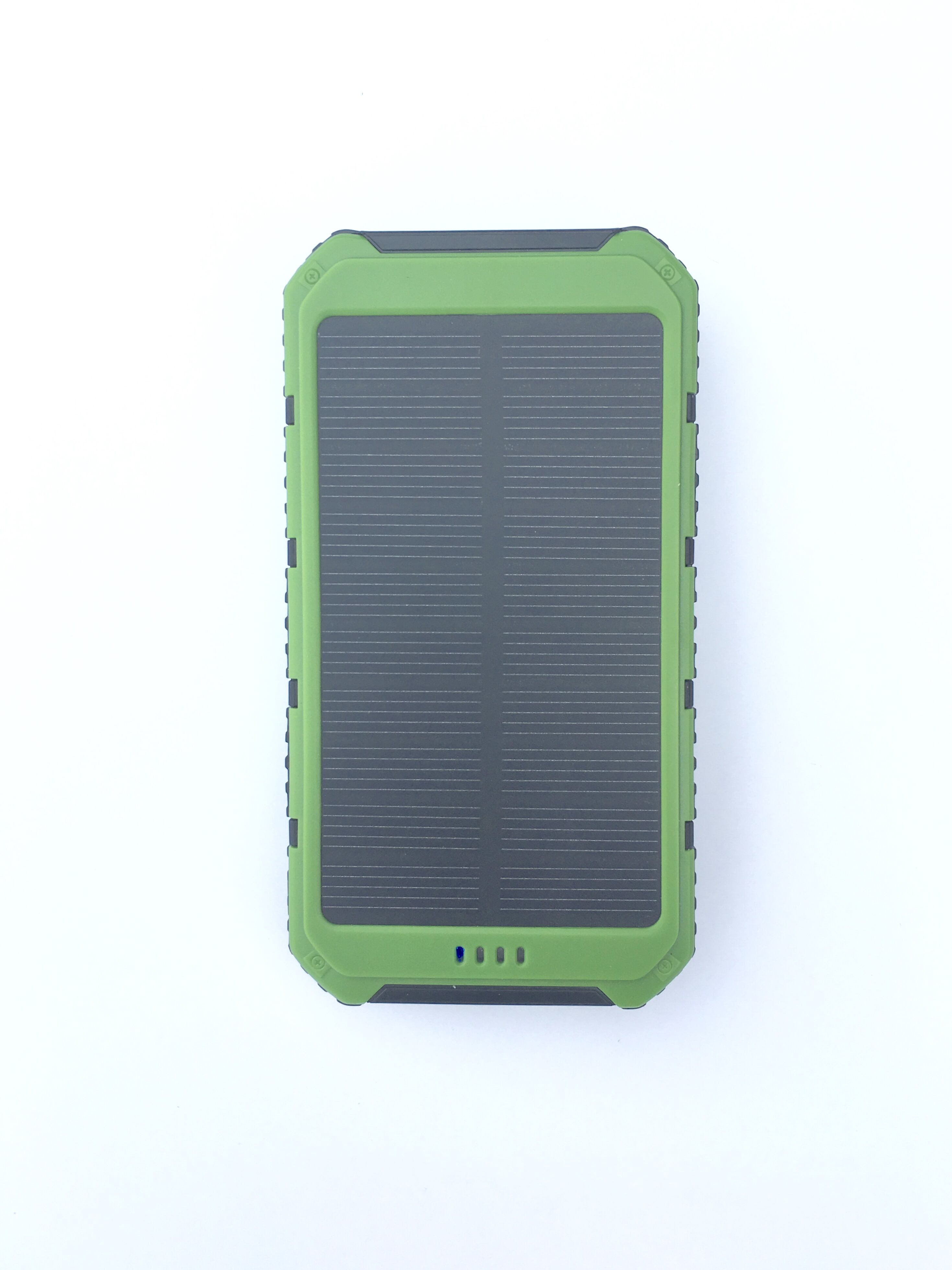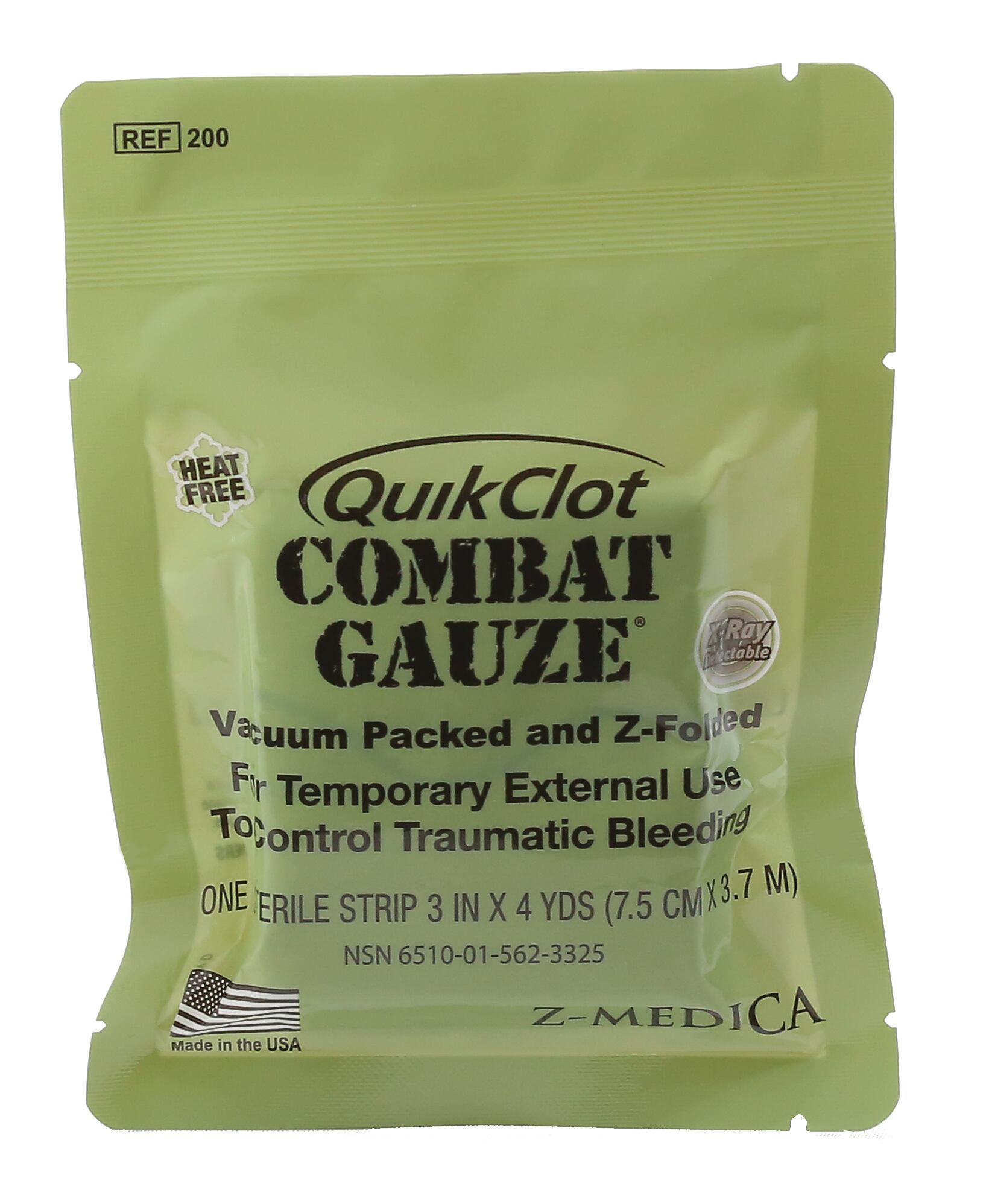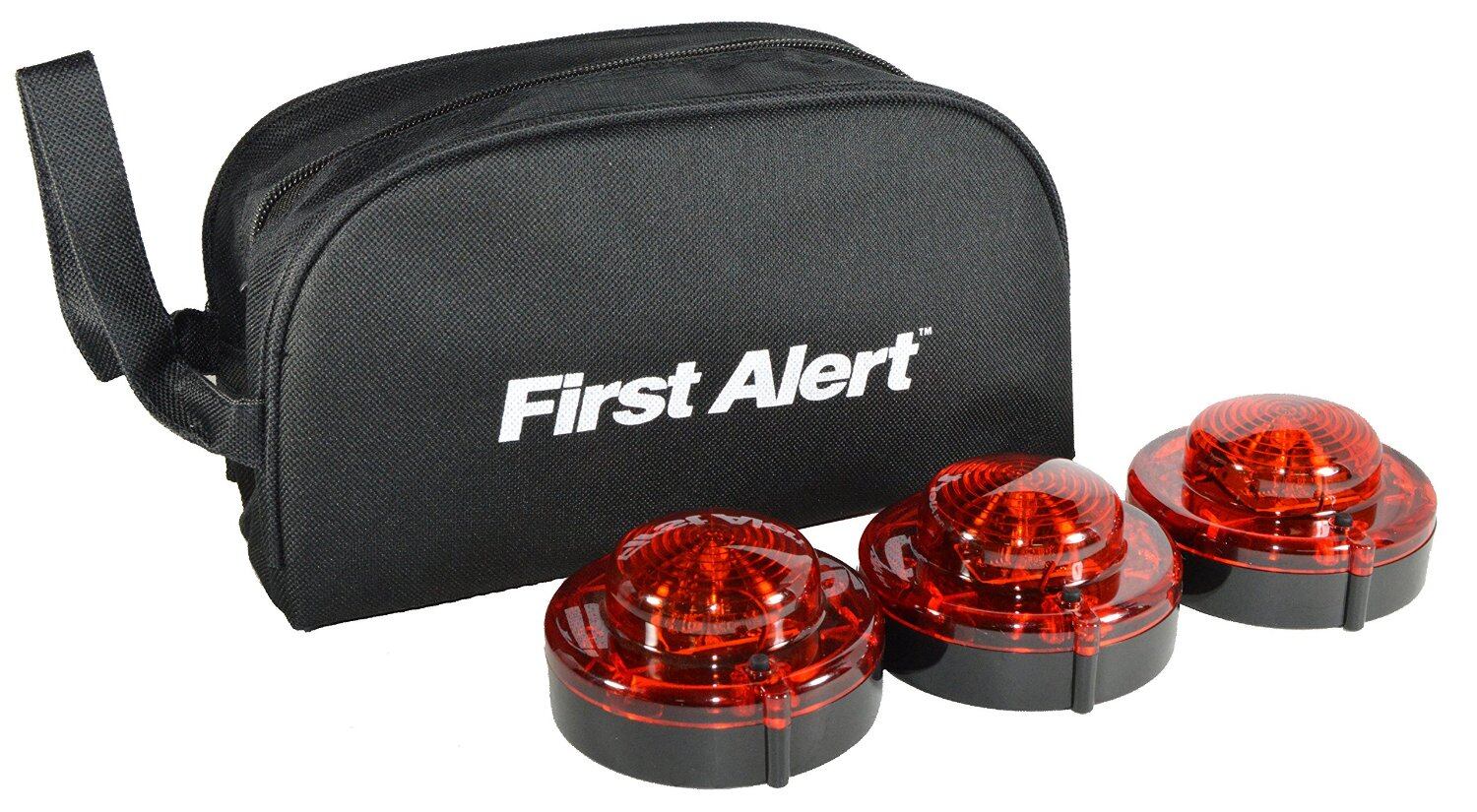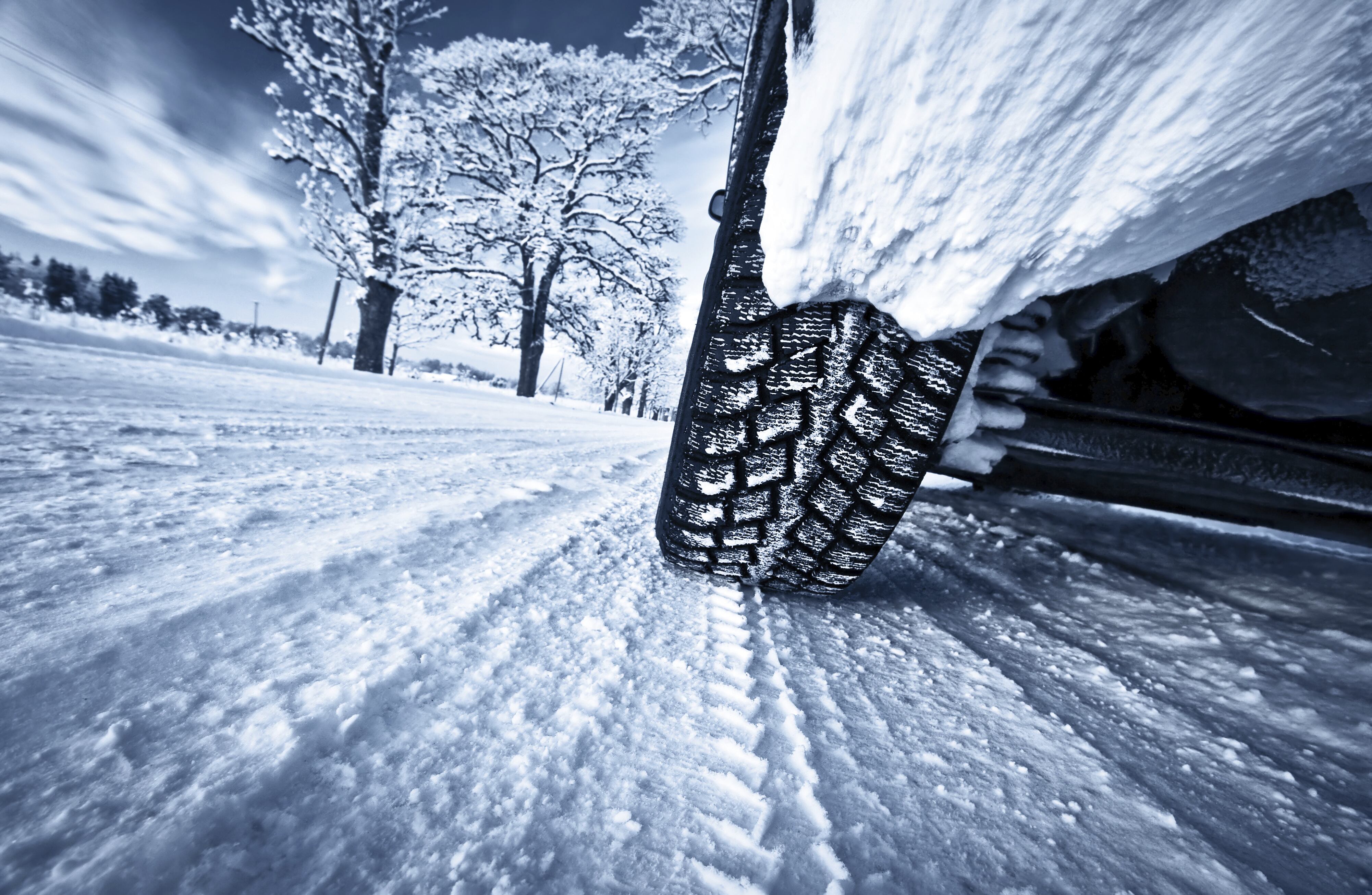From the OFFduty archives: Updated story originally published Dec. 22, 2010.
Your car doesn't need a survival kit. It's probably only a few years old, runs great and you always have your cell phone if there's any real trouble, right?
True, but consider this: Car accidents are the single leading killer of Americans under 35. From windswept highways and back-road "short cuts" to hot-weather breakdowns and snowy spinouts, disasters can lurk around every turn.
There's never a good time to change a flat, but it becomes an increasingly greater magnitude of suck when it's in the rain, at night, on a lonely road, in a cell phone dead zone.
If you want your car to be a life raft when disaster strikes, you need to have the right stuff stashed away. And know how to use it all.
"The worst time to find out that some of your survival kit components are not what you expected — or that you can't operate them properly — is during an emergency situation," said former Marine John McCann, author of "Build the Perfect Survival Kit." That's why he's a big fan of what he calls "backyard survival" — testing your gear out before you actually need it.
"The one thing I always keep in my car besides food, water, fire, shelter, commo, medicine and repair is the fishing kit — because I just love fishing," said Mykel Hawke, a former Special Forces operator and former co-star, alongside his wife, of Discovery Channel's "Man, Woman, Wild."
"I keep a ruck in the trunk, so if I had to bail on the car — in a hurry or in general — I can get all my gear out in one move, even in the dark or chaos," Hawke said. "It is a way of life for me. I figure, the day you don't carry something is the day you'll end up needing it."
Retired Air Force Lt. Col. Frank Hyle, who's been a survival instructor in the military, aviation and petroleum industries for more than 40 years, says no matter what situation you find yourself in, there's one thing you'll always want.
"The No.1 survival item is always your head — so take it with you and don't lose it."
Or, as it Hawke puts it, "I try to carry with me a sense of awareness, care and safety, as these more than anything will keep me from needing the others."
So, let’s break it down for the specific types of breakdowns you might encounter. First, we’ll go over the basic essentials, including what to put in your first aid and car repair kits, and then specialized items for special conditions.
THE ESSENTIALS
Unless you work at some remote radar station in Alaska, your normal commute to work and tooling around town should be pretty tame. But that doesn't mean it can't be deadly, or least become a major headache faster than you can say, "What was that noise?"
No brainers:
- First aid kit (see below)
- Car repair kit (see below)
- Toilet paper
- Matches/lighter
- Knife
- Whistle
- Small notebook and pen
Headlamp:
If you ever need a flashlight on the road, chances are you'll need to use your hands, too. A hiker's LED headlamp will provide hours of hands-free light.

Solar-paneled portable charger will always be ready to power up phones and other gadgets.
Photo Credit: Jon R. Anderson
Portable phone charger:
You may already carry a rechargeable spare battery, but consider one with a built-in solar panel to keep in your car so it’s always topping itself off.
Energy bars and water:
Indispensable when you're cut off from help, but also nice while waiting for the tow truck. Consider
a
stashing a LifeStraw, a small personal water filter, to augment a few bottles of water.
Parachute cord:
MacGyver your way out of some automotive mishap with nothing but 50 feet of parachute cord? Probably not. Be everyone's hero when the trunk won't close after the latest shopping expedition? Count on it.
Window breakout device:
Small tools such as the Resqmeare small enough to fit on a key chain — so it's within arm's reach when you need it — but its spring-loaded head is big enough to smash a door window. A built-in safety blade slices through jammed seat belts.
Spare key:
Magnetic holders make it easy to hide one on your car's frame. Duct tape works, too.
Cash:
Enough for a full tank of gas. Put it in a hard-to-get place — inside your spare key holder or in with your spare tire — so you won't be tempted to use it.
A roll of quarters:
When was the last time you had to feed a parking meter and didn't sweat whether you'd find some change?
Old cell phone:
Even without a service provider,
most
old cell phones can still dial 911. That may not last, however. The FCC is considering barring phones without service from making 911 calls, mostly because of prank and mistaken calls. Check back with GearScout for the latest on that as it develops.
Disposable camera:
Don’t rely on just your phone to document fender benders, or worse, for your insurance claim.
Spare clothes:
From catastrophic coffee spills to real roadside emergencies, some extra clothes can be a life saver in more ways than one. Be sure to include a comfortable pair of walking shoes.
Thumb drive:
Sometimes disaster strikes at home while you're away. Keep encrypted PDFs of all of your important documents along with critical contact info, account numbers and passwords and must-save photos.
FIRST AID
Off-the-shelf kits with band-aids and pain relievers are great for everyday bumps and bruises. But for real emergencies, you'll need to add a few critical items, said Kary Welch, once a California Paramedic of the Year.
"The main thing the average person can do that can really make the difference is hemorrhage and airway control," he said. A heavy bleeder can drain out in less than five minutes, and someone choking can be gone in less than 10.

A battlefield favorite among medics, QuikClot's Combat Gauze for severe bleeding is also available on Amazon.
Photo Credit: Courtesy of QuckClot
No-brainers:
- Band-aids
- Feminine protection
- Painkillers
- Neosporin
- Cold/flu, anti-nausea and diarrhea meds and anything else you typically reach for at home
Field dressings and tourniquet:
To stop out-of-control bleeding until help arrives. A battlefield favorite among medics, QuikClot’s Combat Gauzefor severe bleeding is also available on Amazon.
CPR shield:
Small, over-the-mouth covers to help you save a life without endangering your own.
Space blankets:
They pack up small, but deliver big, not just in warding off shock and shivers, but also the hot summer sun and the pelting rain.
Bug spray, sunscreen:
It doesn't take an emergency to want these on hand.
Snake, wasp and bee sting kit:
Also, consider adding an EpiPen for insurance against all kinds of life-threatening allergic reactions, but you’ll need a doctor to prescribe one.
Instant ice pack:
For sprains, strains and stings.
Prescription meds:
If you're regularly taking prescription meds, consider rotating a few days' worth into your kit.
Spare glasses:
You won't be of much use in an emergency, or anywhere else for that matter, if your glasses break or you lose a contact.

Powerful, long-lasting LED beacons, such as these from First Alert, are a great alternative to road flares, which usually only last about 15 minutes.
Photo Credit: Courtesy of First Alert
CAR REPAIR
You don't have to be mechanic to be glad you have these items in your emergency tool box:
No brainers:
- Road flares — or better yet, longer-lasting LED beacons
- Reflective triangle
- Disposable poncho
- Jumper cables — or better yet, a small pre-charged jumper unit so you don't have to go begging for someone to juice up your battery
Fix-a-Flat:
These aerosol cans of tire-sealing magic can save the day but may void some tire warranties.
Small fire extinguisher:
If you want to make sure your vehicle doesn't become a roadside Car-B-Q, store a small fire extinguisher under your seat or in a place you can reach it quickly. Dashboard fires can spread to the engine and fuel lines quickly.
Two quarts of oil
: When it's your car that's bleeding, this could be its lifesaver. Chances are you can find a good spot under the hood to store them where you'll need them.
Air compressor:
Just wake up to a flat tire from that slow leak you didn't know about? Smaller than a paperback, this will have you on your way to the tire repair shop in no time. Also pays for itself in gas station quarters for all those regular top-offs.
Small gas container:
You just walked five miles to the only gas station in the county to find it doesn't have a loaner gas can? No biggie, you brought your own.
Duct tape:
Leaking hose, hanging bumper, broken window, screaming kids — is there anything you can't fix with duct tape?
Multitool:
Knife, pliers, screwdrivers, bottle opener.
Basic tools:
Even if you're no mechanic, you could have someone along who is, so it might pay to have basic tools on hand. A few adjustable wrenches, a ratchet set, WD-40 and a stiff non-wire brush are a good start.
SUMMER/DESERT
The desert is full of surprises. It's blazing hot by day, but often bitter cold at night.
Cody Lundin, a survival instructor in Arizona and author, who you might also remember as the original co-star of Discovery Channel's "Dual Survival" reality show, knows all this better than most.
"The two easiest ways to die are hypothermia — being too cold — and hyperthermia — being too hot. Dehydration is the ugly brother of both. And you get them all in the desert," he says.
Lundin packs at least three gallons of water spread-loaded around his Jeep.
Ironically, desert drivers can also suddenly find themselves in a torrential downpour.
"We have a monsoon season here with very dangerous flash floods that kill people every year," Lundin said.
No brainers:
- Vehicle coolant and sealer
- Extra sunscreen
- Sunglasses
- Wide-brimmed hat
Water:
Plan on at least one gallon, per person, per day for every person in the car.
Tarp:
Protection from the sun is critical if you break down. Make a lean-to, off the car if necessary, with bungees or parachute cord.
Wool blankets:
One to spread on the ground and another to ward off the cold night if you're stuck waiting on the tow truck.

Are you ready for what the road throws at you?
Photo Credit: A. Grigorjeva/Getty Images
WINTER/MOUNTAIN
Winter weather can bring a slew of slippery situations beyond shoveling off the snow and scraping the windows. Just ask Marine veteran John McCann, author of "Build the Perfect Survival Kit" and a gear outfitter in northern New York, where snow drifts can bury cars.
No brainers:
- Ice scraper/snow brush
- Tire chains
- Extra set of gloves, hat, scarf and boots
Snow shovel:
A lot of snow can fall in just a few hours. A collapsible shovel in the trunk will help ensure you don't get snowed in while you're out.
Cat litter:
This or a bag of sand will provide traction when you're stuck.
Windshield wiper fluid:
Snowy roads mean dirty windshields.
Collapsible tent pole:
"Around here, the plows will bury you if you're on the side of the road," McCann says. If get you get stuck in a drift, you can use this to mark your car with an orange emergency flag tied to the end.
Sunglasses:
To prevent snow blindness. Don't forget the sunscreen for the rest of your exposed skin.
Two mil-spec wool blankets:
They'll keep you warm even when wet and are thick enough to provide a barrier from the wind.
Water and high-calorie food:
To keep warm, you need to fuel your body. Nuts, energy bars and chocolate are all good. Even in the cold, water is crucial.
Screw-on propane stove:
You don't have to be stuck in the snow to appreciate a nice hot cup of cocoa or coffee on a cold winter day. Along with a metal canteen cup, you'll be able to heat drinks and food in no time.

If you're heading off road, you better be prepared to camp.
Photo Credit: Getty Images/iStock
OFF ROAD
Just going to pick up some eggs is a long trek through the wilderness for Lundin, whose off-the-grid, hand-built home is 64 miles from the nearest town. "Even a flat tire can become deadly in the wilderness," says Lundin. "If you're off-roading, you better be prepared to camp."
Backpack:
Filled with tent, sleeping bag, food, and a camp stove.
Extra everything
: Water, gas, oil, and critical spare parts, such as fan belts.
Winch or tow cable:
If you'd have to give the tow-truck guy a grid coordinate instead of a street address, you better be able to extract yourself from trouble.
Mountain bike:
Hawke carries an old Dahon fold-up bike in his truck in case he gets really stuck. "I only needed it once when I was four-wheeling with my sons in the desert. We got three flats at once, so I rode to a station, bought some more Fix-a-Flat and came back."
Bailing wire:
Also called tire wire in some hardware stories. Like duct tape, it's not pretty, but packs up small and offers a field-expedient fix to a multitude of problems. "My Jeep dropped a drive shaft once. I tied it back up with bailing wire and was able to drive out — slowly," Lundin says.
DOOMSDAY
It doesn't have be Armageddon for a full-on bug out. Just ask anyone who lived in New Orleans when Hurricane Katrina blew through. Or one of the hundreds who lost their homes when Mount St. Helens erupted in 1980. And, of course, there’s always the threat of zombies.
"If you're prepared for the zombies, you're prepared for anything," says Sean McCready, a Marine veteran and card-carrying member of a nationwide group that calls itself the Zombie Squad in an attempt to make preparing for tribulation fun.
"The zombie angle keeps it fun," says McCready, who's been stashing away a rucksack full of just-in-case gear in his trunk since getting out of the Corps in 2004. Some recommendations:
Bug-out bag:
There are two basic schools of thought here: Light and minimal so you can grab and go quickly or bring-it-all big to haul everything you can.
Food:
You know better than most how long a few cases of MREs and Top Ramen will last. But consider a mix of rice, beans, wheat and honey for a compact-yet-filling long-term food stash, says Jim Rawles, a former Army intelligence officer and author of the popular SurvivalBlog.com. With a shelf-life of up to 30 years, just one 50-pound sack of rice can feed a family for months. Store in food-grade, lidded 5-gallon buckets to keep out the critters and for easy grab and go when the SHTF.
Water:
Hand-pump purifiers and/or iodine tablets are your best bets. FEMA's disaster-preparation website also recommends keeping household chlorine bleach and a medicine dropper on hand, which can work both as a water purifier and disinfectant.
Cleaning gear:
5-gallon buckets can also pull double duty for storage and washing up. Dr. Bronner'sPure-Castile Liquid Soap is a favorite all-purpose body-hair-tooth-laundry-dishes cleaner.
Weapons:
If undead are coming, consider a copy of the "U.S. Army Zombie Combat Skills" manual, which has a list of weapons options for threats real and imagined.





